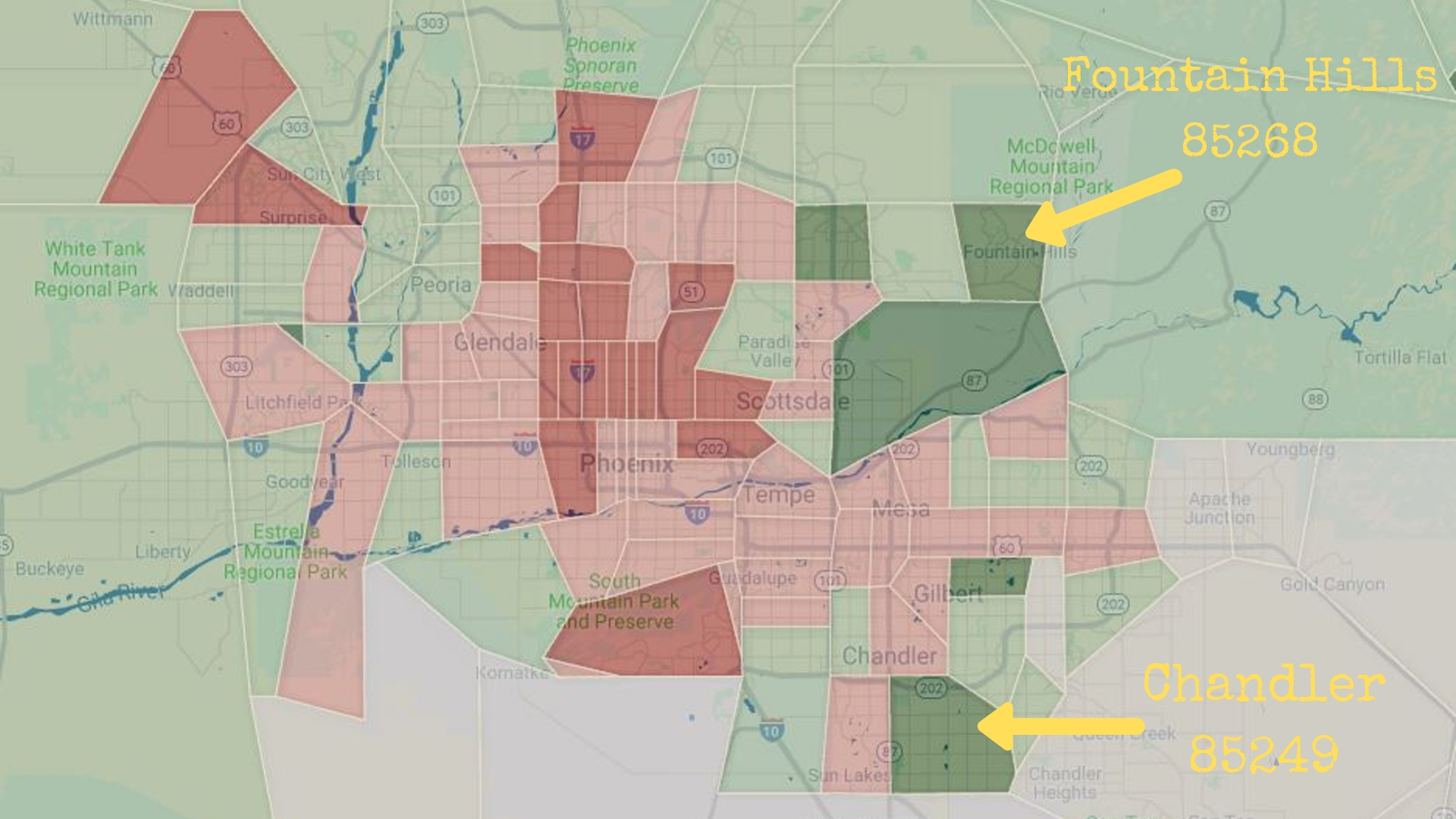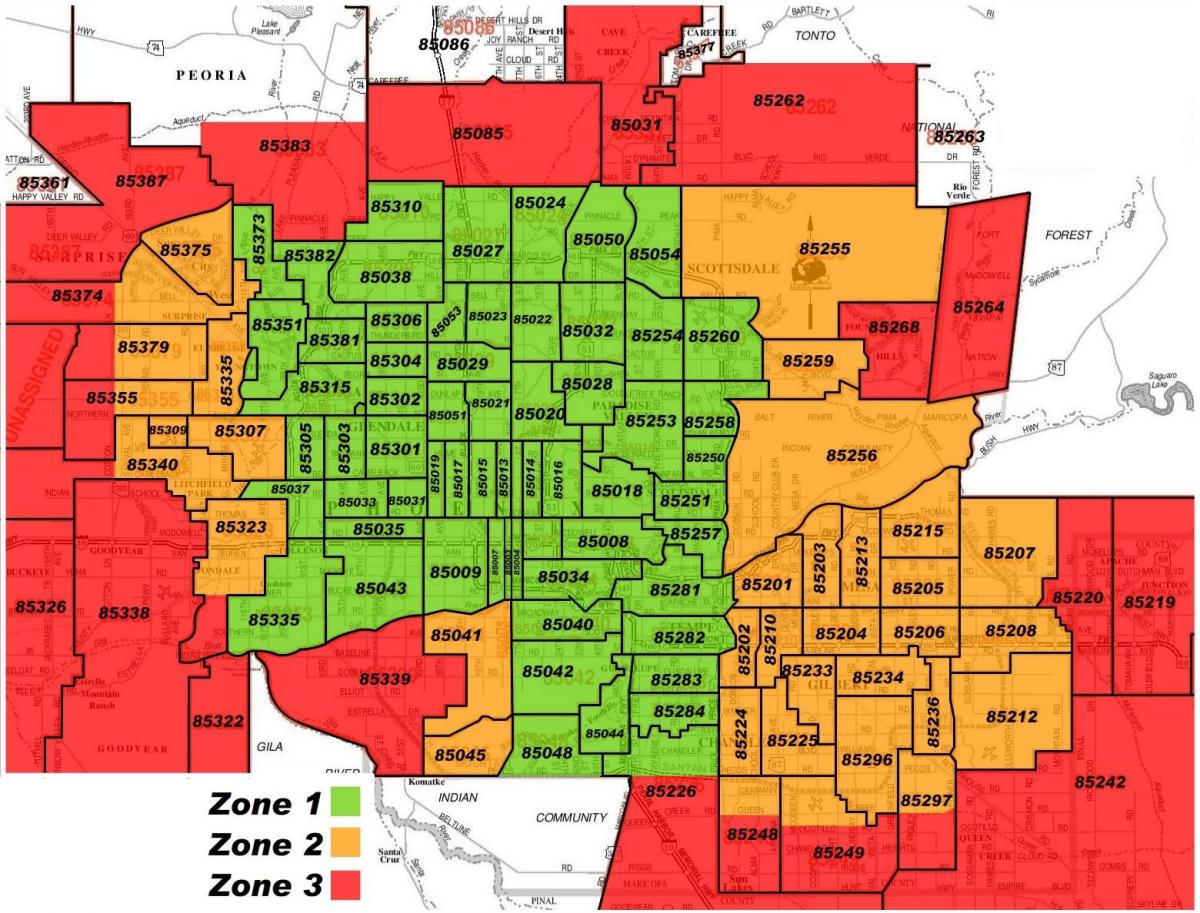Arizona Phoenix area codes are an essential part of the telecommunications system in one of the fastest-growing metropolitan areas in the United States. If you're planning to relocate, do business, or simply want to understand the phone numbering system in Phoenix, this guide will provide you with everything you need to know. From historical insights to current developments, we'll explore the significance of area codes in Arizona's largest city.
Area codes play a crucial role in connecting calls and organizing telephone numbers. In Phoenix, Arizona, multiple area codes exist due to the city's rapid expansion and population growth. Understanding these area codes can help you identify local calls, improve communication efficiency, and even enhance your marketing strategies.
This article dives deep into the world of Arizona Phoenix area codes, covering their history, current usage, and future developments. Whether you're a resident, business owner, or just curious about the telecommunications landscape in Phoenix, this guide will provide valuable insights to enhance your knowledge.
Read also:Margo Stilley The Rising Star In The Entertainment Industry
Table of Contents
- The History of Arizona Phoenix Area Codes
- Current Arizona Phoenix Area Codes
- Geographical Coverage of Area Codes
- Understanding Overlay Implementation
- The Importance of Area Codes in Phoenix
- Business Implications of Arizona Area Codes
- Future Trends in Arizona Phoenix Area Codes
- Common Questions About Arizona Area Codes
- Regulatory Overview of Telecommunications in Arizona
- Conclusion and Call to Action
The History of Arizona Phoenix Area Codes
Arizona Phoenix area codes have evolved significantly since their introduction in the mid-20th century. The first area code assigned to Phoenix was 602, which was part of the North American Numbering Plan (NANP). Established in 1957, this code covered the entire state of Arizona, including the rapidly growing city of Phoenix.
As the population of Phoenix surged, the demand for additional phone numbers increased. This led to the introduction of new area codes to accommodate the growing telecommunications needs. The history of these area codes reflects the city's dynamic growth and technological advancements over the decades.
Key milestones:
- 1957: Area code 602 introduced for Arizona.
- 1999: Area code 480 split from 602 to serve the eastern part of the metropolitan area.
- 2001: Area code 520 split from 602 to serve southern Arizona, including Tucson.
- 2010: Area code 623 overlaid on 602 to address the need for more numbers in the western part of the metropolitan area.
Evolution of Telecommunications in Phoenix
The evolution of telecommunications in Phoenix mirrors the broader technological advancements in the United States. The introduction of digital technology and mobile phones has transformed the way people communicate, making area codes even more relevant in today's interconnected world.
Current Arizona Phoenix Area Codes
Today, Phoenix utilizes several area codes to meet the demands of its growing population. The primary area codes serving the city are:
- 602
- 480
- 623
Each of these codes serves a specific region within the metropolitan area, ensuring efficient allocation of phone numbers.
Read also:Asa Akira A Comprehensive Exploration Of Her Career Achievements And Legacy
Breaking Down the Codes
Here’s a closer look at each area code:
- 602: Covers the central and western parts of Phoenix, including downtown and surrounding areas.
- 480: Serves the eastern suburbs of Phoenix, such as Tempe, Chandler, and Mesa.
- 623: Overlays 602, primarily serving the western suburbs and newer developments in the area.
Geographical Coverage of Area Codes
Understanding the geographical coverage of Arizona Phoenix area codes is essential for identifying local calls and planning business operations. Each area code corresponds to specific regions within the metropolitan area, ensuring efficient communication and resource allocation.
Regional breakdown:
- 602: Central Phoenix, Glendale, Peoria, and surrounding areas.
- 480: Eastern suburbs, including Tempe, Chandler, and Mesa.
- 623: Western suburbs, such as Goodyear, Avondale, and Buckeye.
Why Geographical Coverage Matters
Knowing the geographical coverage of area codes can help businesses target specific markets and improve customer service. It also aids in identifying local calls and reducing long-distance charges.
Understanding Overlay Implementation
Overlay implementation is a strategy used to manage the increasing demand for phone numbers in growing metropolitan areas. In Phoenix, the introduction of area code 623 as an overlay for 602 is a prime example of this approach.
Benefits of overlays:
- Preserves existing phone numbers.
- Minimizes disruption for residents and businesses.
- Ensures a smooth transition to new numbering systems.
Challenges of Overlays
While overlays offer numerous advantages, they can also present challenges, such as the need for 10-digit dialing and potential confusion among users. However, with proper education and planning, these challenges can be effectively managed.
The Importance of Area Codes in Phoenix
Area codes play a vital role in the telecommunications infrastructure of Phoenix. They help organize phone numbers, identify local calls, and facilitate efficient communication within the metropolitan area.
For businesses, area codes are crucial for branding and customer engagement. A local area code can enhance trust and improve customer relations, while a toll-free number can expand reach and accessibility.
Impact on Business Operations
Businesses in Phoenix can leverage area codes to optimize their marketing strategies and improve customer service. By understanding the geographical coverage and usage patterns of different area codes, companies can better target their audiences and enhance their operations.
Business Implications of Arizona Area Codes
For businesses operating in Arizona, understanding the implications of area codes is essential for success. Whether it's choosing the right area code for a new office or optimizing marketing campaigns, area codes can significantly impact business operations.
Key considerations:
- Selecting an area code that aligns with your target market.
- Ensuring consistent branding across all communication channels.
- Providing clear and accessible contact information to customers.
Case Studies
Several businesses in Phoenix have successfully utilized area codes to enhance their operations. For example, a local restaurant chain adopted a 602 area code for its downtown location, improving its visibility and credibility among urban customers.
Future Trends in Arizona Phoenix Area Codes
As technology continues to evolve, the future of Arizona Phoenix area codes is likely to reflect broader trends in telecommunications. The increasing adoption of mobile phones and VoIP services may lead to further changes in the numbering system, while advancements in artificial intelligence could enhance call routing and customer service.
Predicted developments:
- Introduction of new area codes to accommodate growth.
- Increased reliance on mobile and digital communication.
- Integration of AI-driven solutions for improved efficiency.
Preparing for the Future
Businesses and residents in Phoenix should stay informed about upcoming changes in area codes and telecommunications technology. By adapting to these changes, they can ensure seamless communication and continued success in the digital age.
Common Questions About Arizona Area Codes
Many people have questions about Arizona Phoenix area codes. Below are some frequently asked questions and their answers:
FAQ
- Q: What is the difference between 602, 480, and 623? A: These area codes serve different regions within the Phoenix metropolitan area, with 602 covering central Phoenix, 480 serving the eastern suburbs, and 623 overlaying 602 in the western suburbs.
- Q: Do I need to dial the area code for local calls? A: Yes, in most cases, you need to dial the area code for all calls, even within the same area code, due to the implementation of overlays.
- Q: Will there be new area codes in the future? A: It's possible, as the demand for phone numbers continues to grow with the city's population.
Regulatory Overview of Telecommunications in Arizona
The telecommunications industry in Arizona is regulated by the Arizona Corporation Commission (ACC) and the Federal Communications Commission (FCC). These organizations ensure fair practices, protect consumer rights, and oversee the implementation of new area codes and numbering systems.
Key regulatory functions:
- Approval of new area codes and overlays.
- Enforcement of telecommunications laws and regulations.
- Protection of consumer rights and privacy.
Role of Regulatory Bodies
The ACC and FCC play crucial roles in maintaining the integrity and efficiency of the telecommunications system in Arizona. By adhering to their guidelines, businesses and residents can ensure compliance and avoid potential legal issues.
Conclusion and Call to Action
In conclusion, Arizona Phoenix area codes are an integral part of the city's telecommunications infrastructure. Understanding their history, current usage, and future trends can help residents and businesses make informed decisions about communication and marketing strategies.
We encourage you to share this article with others who may find it useful and leave a comment below with your thoughts or questions. For more information on telecommunications in Arizona, explore our other articles and resources. Stay informed and stay connected!

